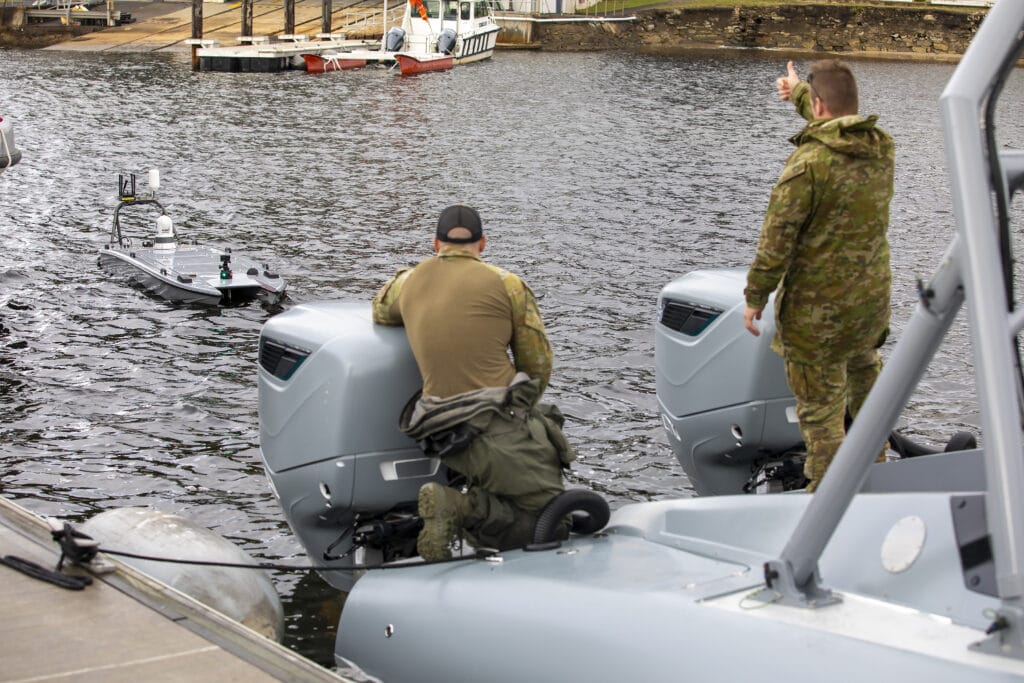REMUS 100
The RNZN recently deployed four of its smaller REMUS 100 UUVs during RIMPAC 2022 as part of Combined Task Force 177 (CTF-177). Alongside American and Australian colleagues, RNZN personnel attached to HMNZS Matataua (formally the littoral warfare unit), embarked aboard USS Portland (LPD-27) to conduct mine countermeasure (MCM) operations off the Coast of California.
During RIMPAC the RNZN UUVs worked alongside manned and other unmanned systems. After surveying the bottom, data collected from the REMUS 100 UUVs was passed onto United States Marine Corp (USMC) and RNZN divers to investigate. Alongside this work, U.S personnel helped train their Kiwi counterparts on deploying and retrieving UUVs from rotary-wing aircraft, in this case a MH-60S.

The RNZN acquired its first two REMUS UUVs in 2006 with the fleet being expanded to six over the years. The capability has been operationally deployed in Tonga, Aotearoa New Zealand and throughout the Pacific, often in the wake of disasters to survey and clear waterways.
REMUS 300
New Zealand signed for four HII REMUS 300 UUVs late last year to help replenish and upgrade its fleet. The RNZN is the first international customer for the upgraded REMUS platform, which is also being acquired by the U.S Navy. Compared to the REMUS 100, the 300 series are larger, deeper diving (up to 300m) and can be equipped to perform longer-endurance missions.
“The REMUS 300 units have been ordered and are expected in New Zealand in the next two months. This will be followed by 6-9 months of acceptance into service work before becoming operational.”
NZDF Spokesperson
An NZDF Spokesperson told Naval News they expect to receive the REMUS 300 vehicles by October. Following receipt, they’ll enter full operational service after six-nine months of trials and acceptance work.
MARTAC MANTAS T12
The RNZN has also quietly bought a single MARTAC MANTAS T12. The vessel debuted alongside an Australian counterpart during Exercise Autonomous Warrior 2022.

The MANTAS design is highly modular. Individual USVs can be quickly outfitted with a distinct payloads, which allows a single platform to perform multiple missions with minimal down-time. During Autonomous Warrior 2022, the RAN and RNZN T12s worked closely with a variety of other unmanned systems, including a larger RAN MARTAC T38 DEVIL RAY.
UAS prospects?
Unlike many navies, the RNZN doesn’t currently operate ship-based Unmanned Aerial Systems (UAS). However, according to a recent tender document, released by the NZDF, there is scope for the RNZN to acquire UAS assets via the NZ Army’s Network Enabled Army effort.
“The number of additional [UAS] systems required through the life of the Contracts will be dependent on many variables, including […] the potential expansion of the capabilities across NZ Army […] or more broadly across Defence including the Royal New Zealand Navy”
According to the tender, the NZDF is also seeking a priced catalogue of products and services from potential UAS supplies, which will be used to inform future procurement decisions for the entire NZDF.

“[The catalogue will help] develop and plan the future tranches [of NEA]. The catalogue will be available for use by the wider NZDF (including RNZN and RNZAF) to deliver other tailored capabilities during the term of the Contracts.”






